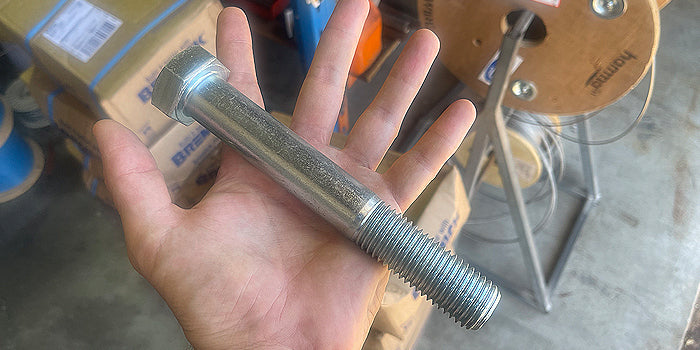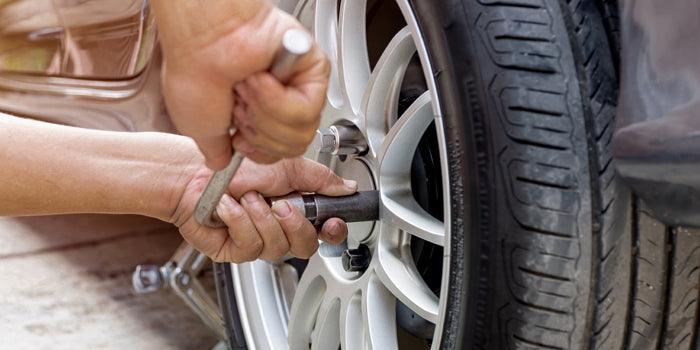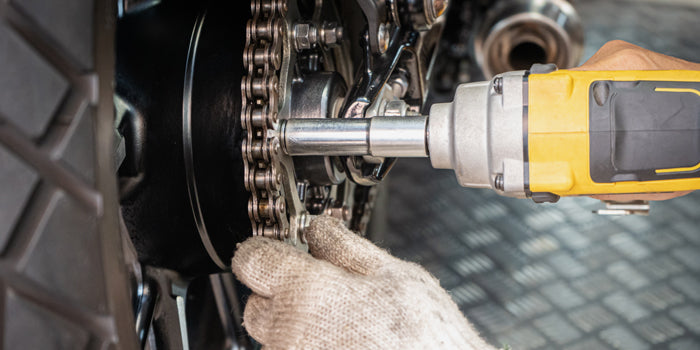Course and Fine Threads
Mechanical fasteners, such as bolts and screws, have a ‘thread’ - the name for the ridges that wrap around the shaft of the fastener. In the case of a bolt and nut combination, the ridges on the bolt align with the grooves in the nut) which allow the bolt and nut to engage and create a mechanical bond. By engaging and tightening, the bolt and nut become a unit, fixed together.
Threads come in two main types - course and fine threads. In this brief article, we take a look at these thread types and the implications they have on fastener capabilities and applications. For more information, or assistance with selecting appropriate fasteners for your application, please contact us here at Bolt-In Co Sunshine Coast - we are here to assist.

A Quick Word on Metric and Imperial
There are two systems, or standards, commonly used for fasteners: metric and imperial. These systems use different names for the course and fine threads within their system:
Metric: Course Threads / Fine Threads
Imperial: UNC (Unified National Coarse) / (Unified National Fine)
For the purpose of this article, which is general in nature, we are just going to use the words ‘course’ and ‘fine’ to refer to the course and fine variants in each system.
TPI & Thread Pitches
Before we dive into the differences between course and fine threads, it is useful to understand thread pitches and TPI. ‘Thread Pitch’ is really what we are referring to when we talk about course and fine threads. It refers to the number of threads on a fastener. A fine thread pitch means more threads, a course thread pitch means less threads. TPI stands for ‘Threads per inch’, and is used to specific exactly how many threads exist per measured inch. This specification is useful to exactly describe different types of fasteners.
What’s Better: Course or Fine Thread Pitches?
Like many things in fasteners, ‘better’ depends entirely on the application. There are many variables with fasteners and the best result is really the least expensive fastener that is suitable for the engineering required. For example, many automotive fasteners need fine thread pitches to ensure a strong connection amidst the vibration and movement inside an engine or vehicle. Alternatively, a course fastener may create a better bond with timber, where the space created between the threads creates a better locking capability. In other words, neither is ‘better’ - both are necessary in different applications.

Advantages of Fine Threads
1. Vibration Resistance
Fine threads have greater resistance to loosening that can be caused by vibration, due to the greater number of threads making contact.
2. Precision
Fine threads can be adjusted much more precisely due to the greater number of threads and commensurate options.
3. Thread Strength
Fine threads distribute their load more evenly along the fastener. This makes them suitable for applications requiring high tensile strength.
4. Working in Limited Space
With more threads per inch, fine threads can be used when limited space is available. The greater number of threads per inch enables them to make a better connection when space is an issue.
5. Weight Reduction
When weight reduction is necessary (aerospace / automotive) fine threads enables smaller fasteners to be used without sacrificing strength.
Disadvantages of Fine Threads
1. Weaker Tensile Strength:
Fine threads have a slightly smaller thread cross-sectional area compared to their coarse counterparts of the same diameter. This means they may have slightly lower tensile strength and may not handle heavy loads as effectively. In situations where you're dealing with high stress or significant loads, it's often better to opt for coarse threads as they offer greater strength.
2. Increased Susceptibility to Stripping:
Fine threads can be a bit more delicate and prone to stripping or damage compared to coarse threads. The narrower spacing between threads means there's less material supporting the load, making them more susceptible to wear, thread deformation, or cross-threading. It's important to be mindful of this when assembling or disassembling and when applying high levels of torque.
3. Heightened Sensitivity to Contamination:
Fine threads are a bit more sensitive to dirt, debris, or lubricant residues. Even tiny particles or foreign substances can cause friction or galling, making it a bit more challenging to tighten or loosen the fastener smoothly. Keep an eye out for cleanliness when working with fine threads.
4. Increased Difficulty in Alignment:
Because fine threads have a finer pitch, aligning them during assembly can be a tad trickier, especially in tight spaces or when visibility is limited. It may require a bit more patience and precision to ensure proper alignment, as there's a slightly higher risk of cross-threading or misalignment.
5. Limited Availability and Compatibility:
While fine threads are still widely used, they may not be as commonly available or as popular as coarse threads. This can make it a bit more challenging to find a wide range of compatible fasteners, tools, or accessories, particularly in certain industries or regions where coarse threads are more prevalent. It's worth keeping in mind and planning ahead if you specifically require fine-threaded options.
Advantages of Course Threads
1. Quick Assembly and Disassembly
Coarse threads are ideal for applications that involve frequent assembly and disassembly, as the wider pitch allows for faster threading and unthreading of fasteners. This can be advantageous in industries such as construction, where time efficiency is crucial.
2. High Clamping Forces
Coarse threads are preferred in applications where high clamping forces are required. The wider spacing between threads allows for increased thread engagement and a larger contact area, resulting in better load distribution and enhanced clamping capabilities.
3. Durability and Strength
The wider pitch of coarse threads provides increased thread depth and higher tensile strength, making them suitable for applications that demand robust and durable fastening solutions. Coarse threads can handle higher loads and exhibit better resistance to stripping or shearing.
4. Compatibility and Availability
Coarse threads are more commonly available and widely used than fine threads. Their popularity in construction, automotive, and general-purpose applications ensures easy access to a wide range of compatible fasteners, tools, and accessories.
Disadvantages of Course Threads
1. Reduced Precision
Coarse threads have a wider thread pitch, which means they provide less precision compared to fine threads. In applications requiring fine adjustments or precise positioning, coarse threads may not be the ideal choice as they do not offer the same level of accuracy.
2. Limited Resistance to Vibrations
While coarse threads generally offer better resistance to loosening due to vibrations compared to non-threaded connections, they are not as effective as fine threads in this regard. If your application is subjected to significant vibrations, such as in high-speed machinery or automotive components, fine threads might provide better stability and resistance against self-loosening.
3. Limited Load Distribution
Coarse threads have larger gaps between threads, resulting in a smaller contact area with the mating component. This can lead to uneven load distribution and potentially increase the stress concentration in localized areas. In applications that require a more evenly distributed load, fine threads may be preferred.
4. Limited Application in Thin Materials
In thin materials, such as sheet metal or thin plastic components, coarse threads may not be suitable. The wider pitch can cause the material to deform or crack more easily due to the larger forces applied during threading. Fine threads are often a better choice for such materials, as they distribute the load more evenly and reduce the risk of damage.
Summary
Fasteners come in different thread pitches which have implications for their fastening capability, efficiency, materials they can work with, cost and precision. Choosing the best fastener for the job isn't always a clear-cut matter. If you'd like some assistance with your fastener requirements, contact our team - we are here to assist.









